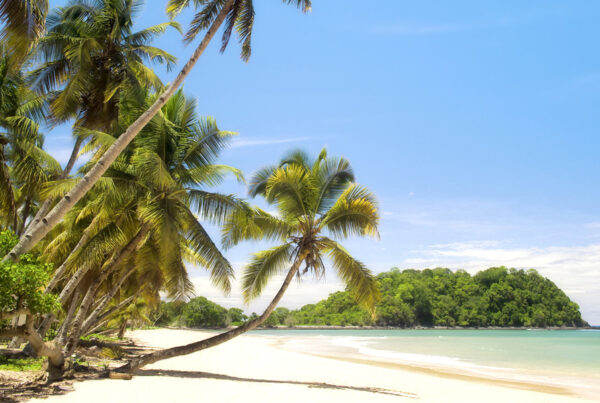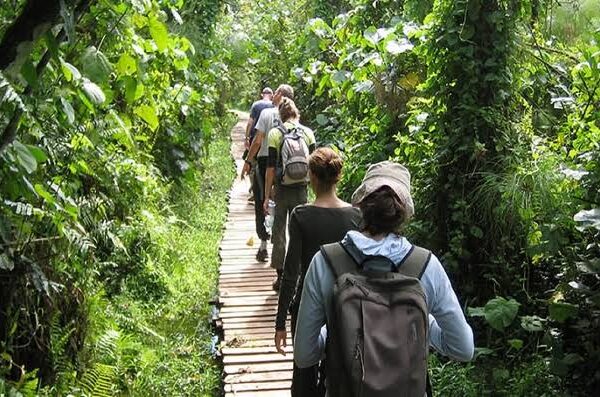15 African Safari Photography Tips
Capture the Wild: A Journey Behind the Lens
There are few places on Earth that ignite the senses and awaken the soul like the African wilderness. Endless golden plains, ancient acacia trees, crimson sunsets that melt into the horizon, and a pageant of wildlife so rich and raw it stirs something primal within. This is Africa — untamed, unpredictable, and undeniably photogenic.
For travelers with a passion for photography, a safari is not just a holiday. It’s a mission. A quest to capture fleeting moments that reveal the spirit of the wild — a lion’s low growl in the early morning mist, the dust kicked up by a charging herd of buffalo, or the gentle gaze of a giraffe beneath a storm-lit sky. But photographing wildlife in Africa comes with its own set of challenges. The light shifts quickly. Animals are always in motion. And your opportunity to capture that one unforgettable image can vanish in seconds.
To help you return not just with memories but with masterpieces, here are 15 essential African safari photography tips — curated to help you blend technical precision with artistic instinct. Whether you’re shooting on a DSLR, mirrorless camera, or even a high-end smartphone, these insights will elevate your images from ordinary snapshots to visual stories that roar with life.
Understand the Golden Hours: Light is Your Greatest Ally
In Africa, light is not just illumination — it’s magic. The early mornings and late afternoons, known as the golden hours, provide soft, warm light that flatters both landscape and subject. Shadows are gentle, colors are rich, and the atmosphere feels alive with texture. This is when predators stir, herbivores are most active, and the land is bathed in a glow that brings everything into dramatic relief.
Avoid shooting in the harsh midday sun when the light is flat and contrast too stark. Instead, use that time to review your shots, recharge batteries, or scout potential angles. When the light returns, be ready to move — because in Africa, the best moments often come with little warning.
Know Your Gear Before You Go (15 African Safari Photography Tips)
No matter how advanced your camera is, it’s only as good as your comfort with it. Practice shooting on different settings before your safari. Understand how to adjust ISO, aperture, and shutter speed on the fly. Familiarize yourself with burst mode for capturing action and silent shutter options for shy or sensitive animals.
Long lenses are essential — especially in open savannah where animals may be at a distance. A focal length of 300mm or more gives you the reach you need, while a good zoom lens (like 100–400mm) offers versatility. If you’re working with a smartphone, consider investing in clip-on telephoto lenses and a stabilizer to improve sharpness and framing.
Patience is the Pulse of the Wild
Safari photography isn’t about chasing one shot after another. It’s about waiting, observing, and anticipating behavior. The best photographs come to those who understand rhythm — the stillness before a lion pounces, the lull before an elephant flaps its ears, the twitch of a tail that signals a leap.
Sometimes, hours may pass without the perfect frame. But when it comes, it’s often layered with depth and narrative because you were patient enough to read the wild instead of rushing it.
Focus on the Eyes — Tell a Story Through Expression
Eyes are the windows to the soul — and nowhere is this more true than in wildlife photography. A sharp, well-lit focus on the eyes creates an instant emotional connection between the subject and the viewer. Whether it’s the piercing stare of a leopard or the curiosity in a young elephant’s gaze, the eyes pull the audience in.
Use single-point autofocus and ensure your focal point rests on the animal’s eye. This technique brings intimacy to your images, turning distant animals into relatable characters in your visual story.
Mind the Composition: Let the Landscape Speak Too
While close-up portraits are thrilling, Africa’s power lies equally in its sense of scale and setting. An elephant silhouetted against the setting sun. A lone lion standing on the cracked floor of a dry riverbed. These wide shots, when composed thoughtfully, give context and mood.
Apply compositional rules like the rule of thirds, using natural lines (such as tree trunks or horizons) to guide the viewer’s eye. Include foreground or background elements — branches, termite mounds, clouds — to layer your photo and create depth.
Don’t Just Shoot Action — Capture Stillness and Subtlety
It’s tempting to chase the big moments: the hunt, the kill, the charge. But the quiet interludes often tell deeper stories. A lioness licking her cub. A giraffe feeding from the treetops. Zebras resting in the heat, framed by dust and light.
These scenes whisper rather than roar, but they linger in memory. Train your eye not only to spot drama, but to appreciate the poetry of pause in the African landscape.
Use Natural Frames and Shadows Creatively
Africa offers plenty of organic framing tools: overhanging branches, tall grasses, or termite mounds can add a sense of enclosure and focus. These frames not only guide the eye but create a sense of intimacy and artistry.
Shadows, too, are powerful storytellers. The elongated shapes of elephants at dawn, or the reflection of a heron on still water, can transform a simple image into a work of visual elegance.
Shoot in RAW for Maximum Editing Flexibility
If your camera allows it, always shoot in RAW format. Unlike JPEGs, RAW files retain all image data, giving you greater control during post-processing. Whether you need to recover blown highlights or enhance shadow detail, RAW images provide the flexibility to elevate your photos to professional standards.
Later, use editing software to adjust exposure, correct colors, and crop for composition — but avoid over-processing. Your goal is not to alter reality, but to amplify the beauty already present.
Use a Beanbag, Not a Tripod, in Vehicles
While tripods are ideal for landscapes, safari vehicles don’t always offer the space or stability for them. Instead, use a beanbag or camera cushion to steady your lens on the window ledge or roof. This setup minimizes shake and allows for quick repositioning — crucial when your subject moves.
Always keep your gear within arm’s reach and your settings prepped for action. The wild won’t wait.
Be Silent, Respectful, and Present
The wild demands reverence. Avoid loud noises, sudden movements, or overzealous use of flash. Many animals are sensitive to disruption, and your intrusion could alter their natural behavior — or spook them away entirely.
More importantly, don’t let the camera become a barrier between you and the experience. Sometimes, the best photos are mental snapshots, soaked in the moment, rather than captured through a lens.
Tell a Visual Narrative with Variety
Rather than returning with 300 versions of the same lion portrait, strive to diversify your shots. Capture different species, moods, times of day, weather conditions, and angles. Include wide scenes, close-ups, animal tracks, and even campfire moments or your guide’s silhouette at sunrise.
These variations help you build a visual narrative that feels complete, dynamic, and immersive — a full tale of your African odyssey, not just isolated images.
Shoot With Both Eyes Open — Literally and Figuratively
Keeping both eyes open helps you stay aware of your surroundings — essential for spotting movement or reacting quickly. It also encourages you to see the bigger picture: the story behind the scene, the behavior unfolding in the background, or the lighting opportunity just beyond your current subject.
The best photographers aren’t just technicians. They are observers of nuance, alive to every sound and flicker of light.
Know Your Subject’s Behavior to Predict the Shot
Knowledge is power, especially on safari. Learn about the animals you’ll encounter — their habits, movements, territories, and social cues. A yawning lion might soon rise and stretch. A flapping elephant ear could signal agitation. A twitching tail in a cheetah means a chase is near.
Anticipating behavior gives you time to adjust your settings and be ready — not just for a photo, but for the photo.
Respect Boundaries and Practice Ethical Photography
Never encourage guides to get closer than is safe or ethical. Don’t block an animal’s path or disturb a resting herd. Real wildlife photography values truth over thrill, respect over recklessness.
Your images will be far more meaningful when they are captured with integrity, showing animals in their natural state, undisturbed and free.
Review, Reflect, and Improve With Each Drive
After each game drive, take time to review your photos, not just for selection but for self-improvement. What worked? What didn’t? What did you miss, and why? With every frame, you grow more attuned to the wild, more sensitive to light, timing, and storytelling.
Safari photography is not just a creative endeavor. It’s a journey of learning, humility, and connection — to the land, its creatures, and yourself.
Let WildHorn Africa Bring Your Vision to Life
Ready to capture the raw beauty of Africa through your lens? Let WildHorn Africa design your dream photography safari. From custom itineraries led by expert wildlife guides to visits in regions teeming with photographic potential, WildHorn Africa offers an immersive, ethical, and expertly curated safari experience.
We understand the rhythm of light, the movement of animals, and the heart of a photographer. Whether you’re a seasoned pro or an eager beginner, we’ll help you discover moments worth remembering — and frames worth hanging.
Book your African safari with WildHorn Africa today, and step into a world where every sunrise is a canvas and every animal a masterpiece waiting to be framed.
15 African Safari Photography Tips #15 African Safari Photography Tips 15 African Safari Photography Tips





 WildHorn Africa – Authentic and unforgettable tours across Africa, guided by local experts who know the land, wildlife, and culture best.
WildHorn Africa – Authentic and unforgettable tours across Africa, guided by local experts who know the land, wildlife, and culture best.


